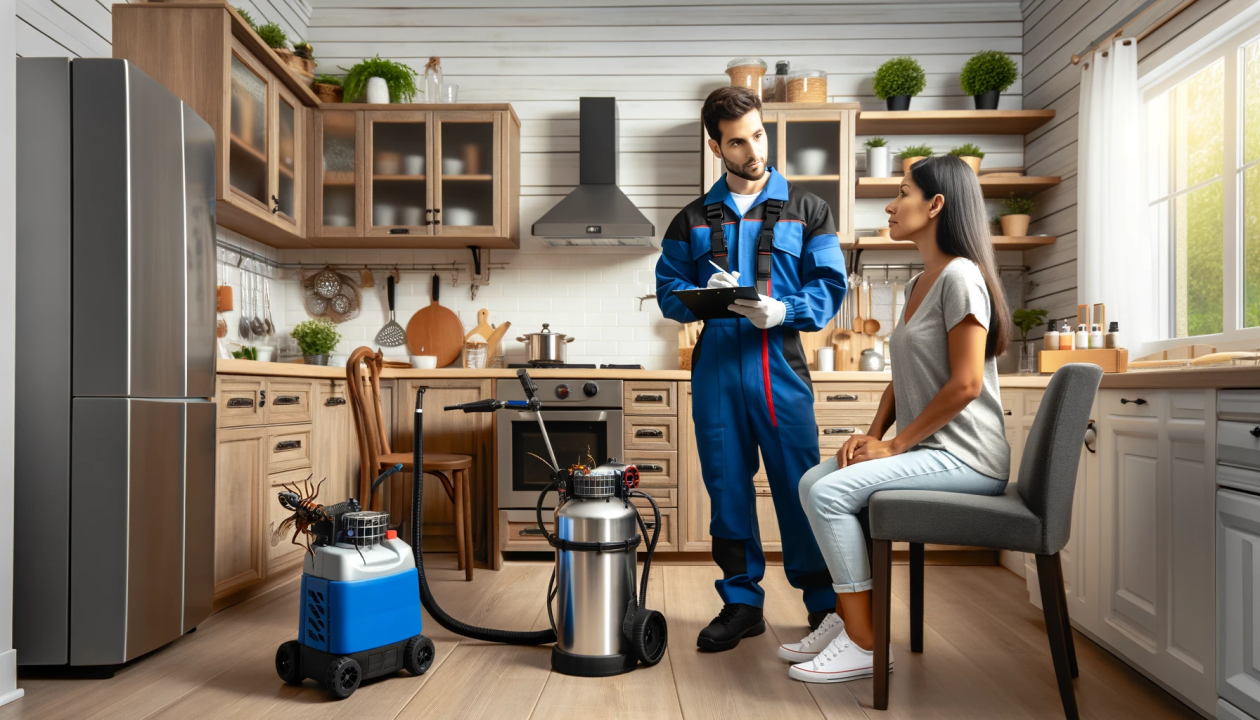A Comprehensive Guide to the Various Types of Insect Control Approaches
With the myriad of pest control approaches offered, it can be overwhelming to find the most reliable solution for a details parasite issue. In this comprehensive guide, we will certainly explore these various types of parasite control methods, offering understandings right into their applications and advantages. By the end, you will certainly have a clearer understanding of which method might be the ideal fit for your bug control demands.
Chemical Pest Control Techniques

One usual type of chemical insect control is insecticides. Insecticides target specific parasites, such as insects, termites, or ants, and can be used both inside your home and outdoors.
An additional type of chemical insect control is rodenticides. These are chemical substances designed to manage populations of rodents, such as rats and mice.
Herbicide, likewise referred to as herbicides, are another sort of chemical insect control approach. Herbicides are designed to precisely eliminate unwanted plants, referred to as weeds, without creating injury to desirable plants. They are frequently utilized in farming, landscaping, and gardening to regulate the development of unwanted greenery.
While chemical pest control techniques can be extremely reliable in eliminating bugs, it is very important to use them judiciously and adhere to safety guidelines. Overuse or misuse of chemical pesticides can have adverse effect on human health and the setting. It is vital to employ these techniques responsibly and think about alternative pest control strategies whenever feasible.
Organic Insect Control Approaches
Biological parasite control approaches involve using living organisms or natural materials to manage and control pest populaces. Unlike chemical techniques, which often rely upon artificial chemicals, organic control techniques make use of the natural enemies of pests to manage their populations. This technique is considered more eco pleasant and lasting, as it lowers using damaging chemicals and decreases the danger of chemical resistance.
One extensively utilized biological parasite control approach is the intro of natural killers or bloodsuckers. Ladybugs are introduced to control aphids, while specific wasp types are launched to target caterpillars. These killers and bloodsuckers eat bugs, reducing their numbers and avoiding infestations.
One more organic control method is using microorganisms. Particular microorganisms, infections, and fungi can be used to contaminate and kill specific pests. As an example, the germs Bacillus thuringiensis is frequently made use of to regulate caterpillars, as it produces contaminants that are lethal to these insects.
Organic control techniques can also entail the use of scents or all-natural materials that interrupt the breeding patterns of parasites. By disrupting their reproduction, these approaches aid to reduce pest populaces gradually.
While organic parasite control methods are normally reliable, they might need longer durations to achieve wanted outcomes compared to chemical approaches. In addition, careful factor to consider needs to be provided to the option and launch of natural adversaries to stop unintended harm to beneficial microorganisms or environments.
Physical Pest Control Approaches
To successfully manage and manage pest populations, different pest control approaches discover here referred to as physical parasite control methods are used. These methods include using physical barriers, catches, or devices to protect against pests from accessing or harming home. One usual physical bug control technique is using screens or nets to maintain insects out of buildings or yards. These screens are usually constructed from great mesh product that enables ventilation while protecting against bugs from getting in. An additional physical insect control technique is the installment of fences or wall surfaces to maintain bigger pests, such as deer or rabbits, out of gardens or agricultural fields. These barriers physically obstruct the bugs' accessibility to the location, decreasing the possibility for damages. Additionally, traps and gadgets can be made use of to capture or drive away parasites. As an example, sticky catches can be positioned in areas where bugs are a trouble, and the insects come to be stayed with the glue surface. Ultrasonic tools can also be utilized to emit high-frequency noises that are undesirable to bugs, triggering them to leave the location. Physical insect control techniques are an eco friendly choice to chemical pesticides, as they do not count on the use of dangerous chemicals.
Natural Parasite Control Techniques
All-natural parasite control approaches use a lasting and environmentally friendly method to managing and eliminating bugs. One of the most typical natural pest control methods is organic control. By adopting these all-natural parasite control approaches, people and neighborhoods that site can successfully manage insects while reducing the negative impacts on the setting and human wellness.
Integrated Parasite Administration (IPM)
Integrated Parasite Management (IPM) is a comprehensive and organized strategy to pest control that combines numerous techniques and techniques to successfully manage bugs while minimizing the usage of chemical pesticides. IPM aims to keep pest populaces below the economic injury level by using a mix of social, biological, and chemical control approaches.
Cultural control methods entail changing the setting to make it much less beneficial for bugs. This can consist of techniques such as crop rotation, correct hygiene, and the use of immune plant varieties. By creating negative conditions for parasites, cultural control methods can significantly minimize insect populations.

Chemical control approaches are used as a last resource in IPM. They involve the targeted and wise use chemicals to manage pest populaces. Unlike conventional bug control methods, IPM intends to reduce using chemical pesticides by utilizing different techniques.
Integrated Pest Monitoring (IPM) is a positive strategy that concentrates on long-lasting bug administration as opposed to relying exclusively on responsive steps. By integrating several control methods, IPM supplies a important source more lasting and environmentally pleasant technique to pest control.
Verdict
It discussed chemical, organic, physical, and natural pest control methods, as well as the incorporated insect monitoring method. By understanding these numerous approaches, individuals can make educated decisions on which pest control method is most ideal for their particular requirements and choices.